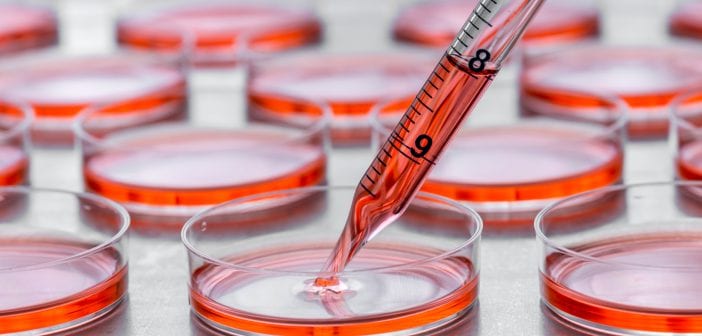Stem cell research has led to remarkable breakthroughs in treating diseases and will likely lead to many more in the years to come. However, not all stem cell research is ethical, which has been a major concern for Pro-Lifers. Stem cells are undifferentiated cells, having the potential to develop into a variety of cells of the same type. Because they have not yet differentiated, stem cells present unique options for research and treatment. There are many sources of stem cells, such as the gut, bone marrow, and human embryos.
For years, the anti-Life lobby pushed for embryonic stem cell research, in which a unique human embryo is destroyed in order to harvest and experiment on powerful stem cells. Because we acknowledge the Right to Life of every human person from conception to natural death, destroying already existing human embryos or creating them solely for destruction in scientific research is incompatible with Pro-Life ethics. The anti-Life lobby has pushed embryonic stem cell research so much that many people mistakenly believe embryonic research is the only kind of stem cell research. Even in a Pro-Life state like Texas, taxpayer dollars have been used in embryo-destroying research. Fortunately, destroying human embryos is not the only means of gaining access to potentially life-saving stem cells.
For example, adult stem cells have been used successfully to treat one million patients. In hospitals today, adult stem cell procedures are widely used to treat more than 80 conditions. Stem cells can either be transplanted from donor to patient, or doctors can remove a patient’s own stem cells and manipulate them before re-injecting them into the patient as a self-treating agent. To date, embryonic stem cell research has not successfully treated a single condition.
Another Pro-Life means of acquiring stem cells to treat a multitude of conditions is umbilical cord blood. The blood retained in the umbilical cord at birth is rich with stem cells. Harvesting umbilical cord blood is quick and painless, and harmless for both the mother and child. The growing public interest in potentially life-saving umbilical cord blood inspired Consumer Affairs to create and maintain an umbilical cord blood banking resource page. Consumer Affairs is an online consumer news and resource hub, offering extensive company information and customer reviews for many industries.
Tommy Sullivan, a content marketing specialist with Consumer Affairs, told Texas Right to Life in an interview that Consumer Affairs has seen and responded to growing consumer interest in cord blood banking. Most recently, scientific experiments using stem cells from cord blood in mice has shown improved memory in the mice. This development has led to renewed hopes that the stem cells from umbilical cord blood could be used to treat Alzheimer’s disease and other forms of dementia. Evidence also suggests that stem cells from cord blood can successfully treat leukemia and autoimmune diseases. Increasingly, families with known health risks choose to bank their baby’s cord blood with the hopes of treating the child later in life or even treating ailing family members with these powerful stem cells.
Consumer Affairs compiled a brief video that explains basic cord blood collection and processing procedures. The video explains the noninvasive process and the different kinds of storage, public and private. Additionally, the Consumer Affairs resource page lists the profiles of several cord blood banking companies and offers customer reviews. One reviewer described her decision to bank her second son’s cord blood after her oldest son developed autism. The cord blood from the second son may one day be used to treat the boy if he develops autism, or the stem cells might be a match for his brother and offer experimental treatment to his family member. In the long term, if the studies mentioned above continue to show success, the cord blood could even be used to treat Alzheimer’s disease when the brothers reach old age.
The groundbreaking research in the use of stem cells offers many potentially life-saving treatments. Cord blood banking demonstrates one way that stem cell research can be Pro-Life, and thus beneficial to all people involved.


